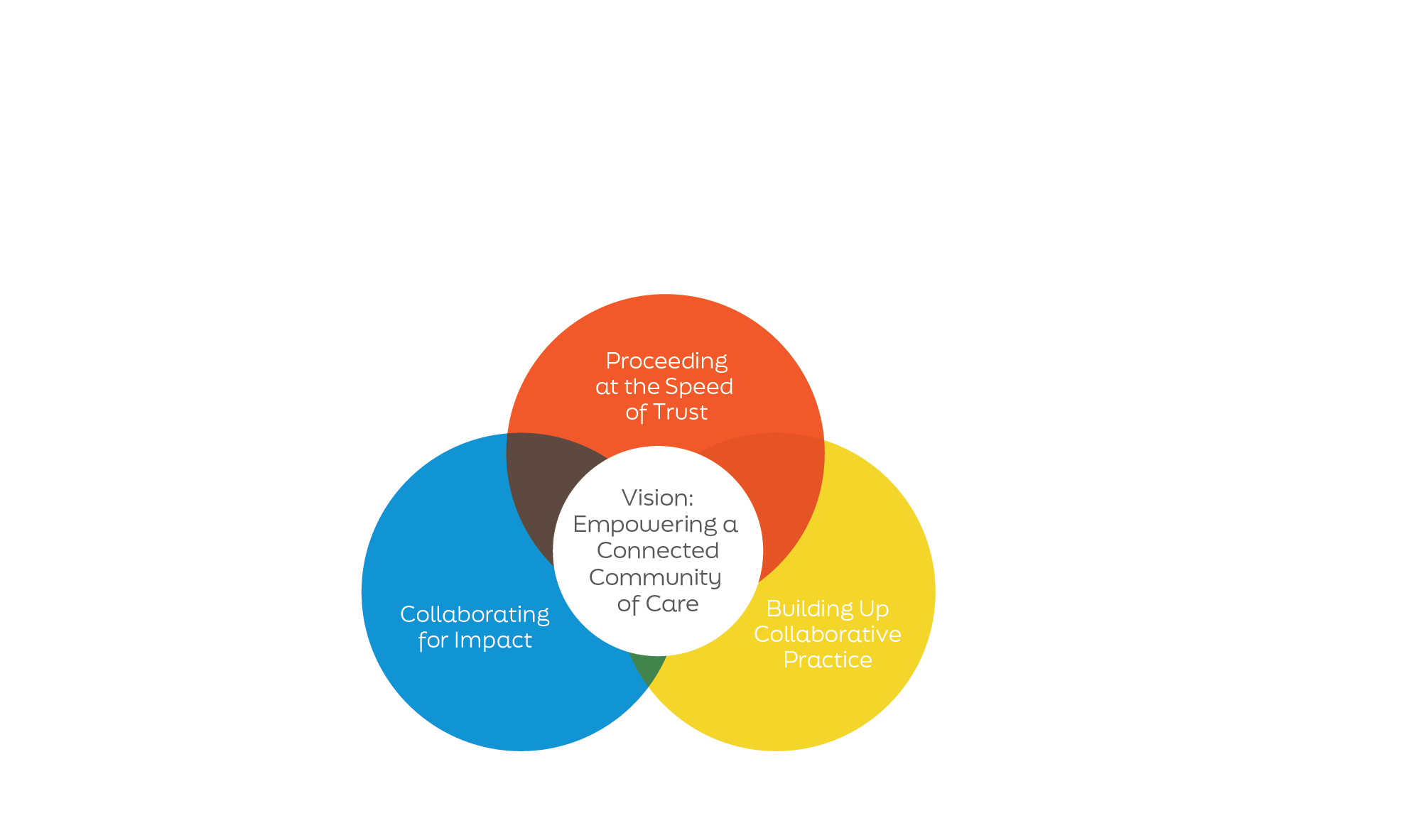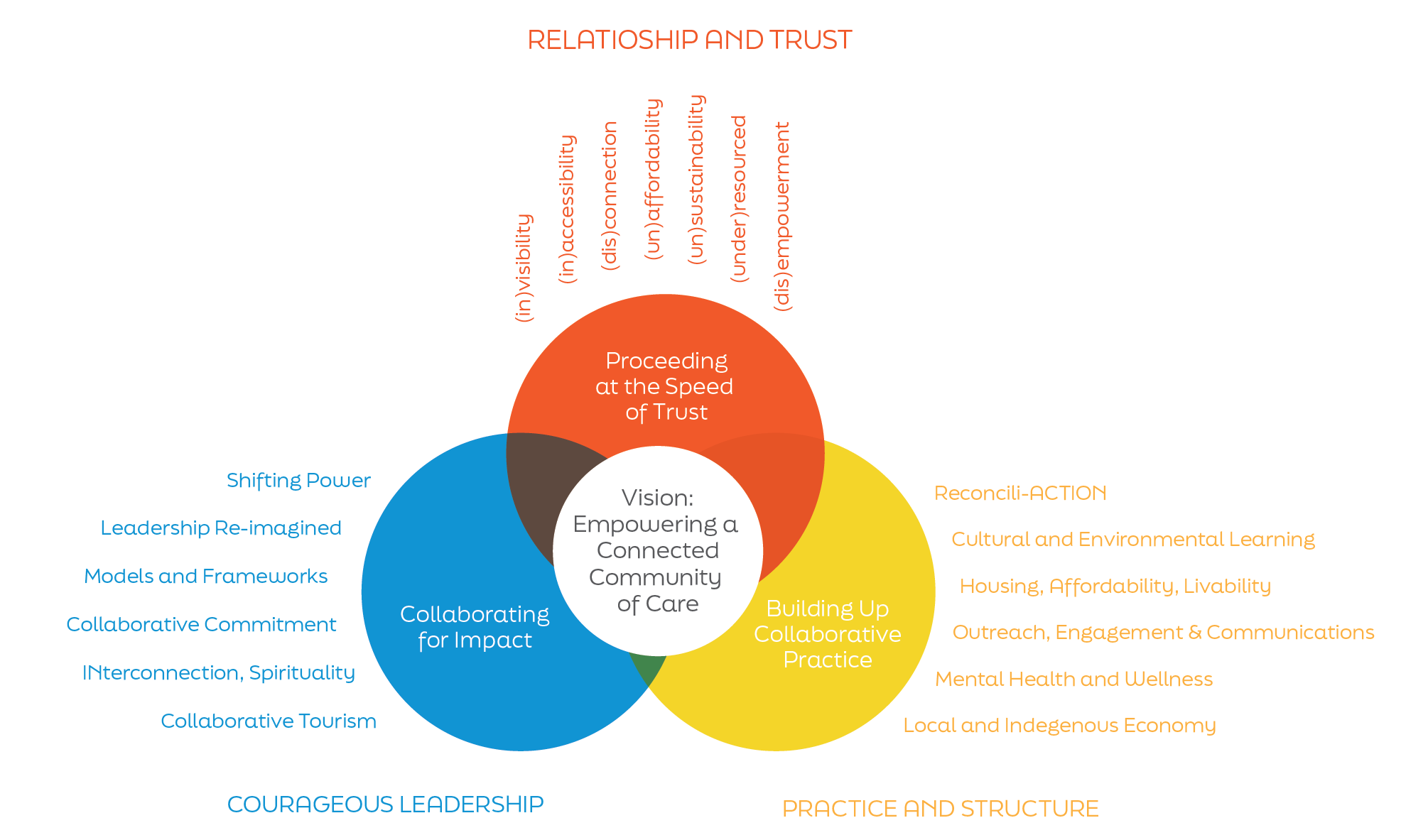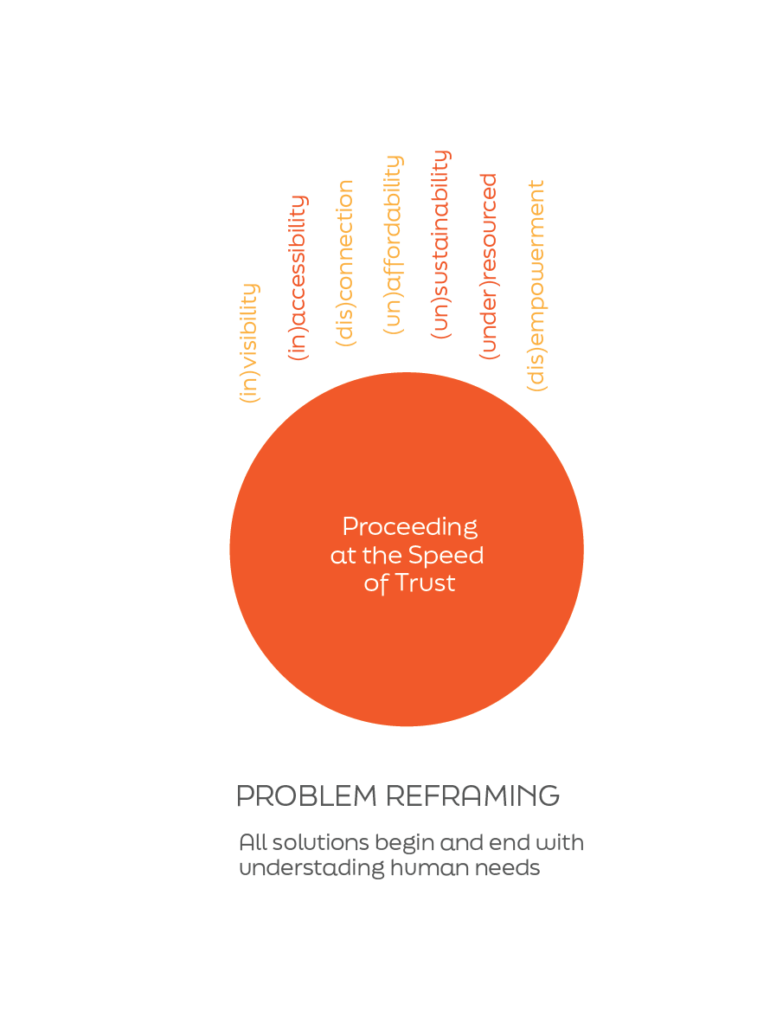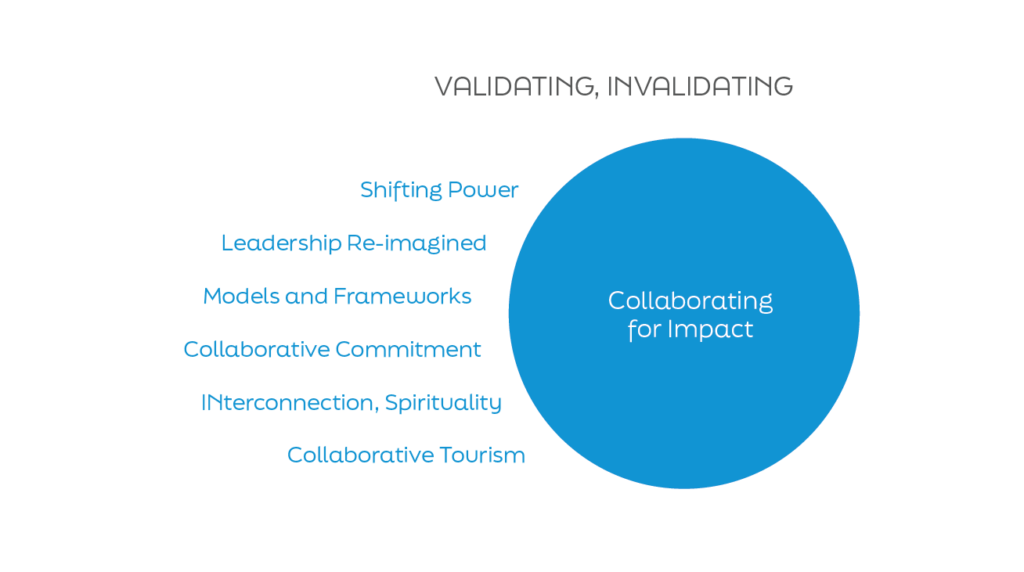Shared Learnings
The following case studies, stories and videos were developed in partnership with researchers, evaluators and community organizers in the Bow Valley.
Shared Learnings: Moving Mountains Initiative
The Journey of the River
Knowledge Builder: On Collaboration
8 Insights to Strengthen Collaborative Partnerships
Collaborating for Impact
Video
Reflection Paper
Knowledge Builder: Transforming the Flow of Resrouces
Listen, Gather, Share and Exchange: A Community Knowledge Framework


Vision
In our analysis of data, knowledge and stories, Moving Mountains participants collectively expressed a vision for empowering a connected community of care in the Bow valley. In our conversations, participants highlighted the challenges and opportunities that both helped and hindered a sense of connection and care in the Bow Valley. The ‘helping/hindering’ dichotomies reverberated deeply within the lives and experiences of grassroots groups, non profit organizations and charities and changemaker / community organizing individuals on both sides of the problem / opportunity divide. The vision to empower a connected community of care seeks to take hold of (or take back, where it has been lost) the potential of community connection and care, advancing an empowered expression of civil society that strengthens the Bow Valley. Visually, the civil society vision is placed at the center of the Knowledge Framework’s Venn diagram, which is illustrated in Figure 1 above.
The findings in yellow highlight above indicate the ‘problem’ areas that had highest saturation. In other words, the themes in yellow above, represent areas that civil society felt were the most significant and painful challenges. These areas were further validated through their identification as opportunity spaces – ie, through their alternate framing as hopeful strategies for change. For example, ‘invisibility’ was shared as a problem space, and ‘visibility’ was framed as an opportunity space. Problem ‘reframing’ was an important tool for groups and facilitators as the initiative progressed into solution building phases and work within the Learn and Try groups of the initiative.
Proceeding at The Pace of Trust
At their core, participants expressed a deep desire for connection to help strengthen belonging and trust in Bow Valley civil society. The initiative’s findings and stories revealed that trust is best built without an agenda, timeline or alternate objective. As such, the initiative practiced ‘proceeding at the pace of trust’, in terms of negotiating and acknowledging the initiative’s timeline, extending timeline constraints and acknowledging the different worldviews in which the work of the initiative was unfolding. As the initiative progressed, the theme matured to include “proceeding at the pace of loss’ to acknowledge grief and loss as part of change processes, and as day to day realities in the Bow Valley. Grief and loss also operate on timelines of their own, and require space and time to address. For different groups and collaborations, trust building requires different timelines and approaches. A barrier to trust building is imposing a timeline to the work. Within the practice of proceeding at the speed of trust, our findings identified 7 contradictory experiences that both support and impede civil society collaborations in the Bow Valley. They include:

This theme was prevalent in community dialogues in Health and Wellness, Economy and Truth and Reconciliation. Participants in the Health and Wellness community dialogues shared expressions of not feeling seen, acknowledged, or heard in civil society. This theme also resonated in other conversations, particularly in dialogues in areas of Economy and Truth and Reconciliation. Throughout the findings, this theme is particularly true for low income, neurodiverse BIPOC, 2SLGBTQ members and groups in the Bow Valley. A lack of visibility in civil societies is a barrier to collaborative impact in the Bow Valley.
This theme was prevalent in Health and Wellness and Truth and Reconciliation. Participants in the Truth and Reconciliation dialogues pointed to shared expressions of not being physically, mentally, linguistically and/or spiritually able to participate in Bow Valley civil society. Examples of these barriers include:
- A lack of language access, physical access (ie –roadways, personal safety) and infrastructure supports (spaces, locations) for collaboration
- A lack of financial security - predictable, sustainable work schedules or paid living wages and incomes in the Bow Valley
- A lack of, or inadequacy of literacy, resources and infrastructures
- A lack of mental health and safety, culturally sensitive wellness supports for collaboration
- A lack of known, accessible entry points to collaborative opportunities
A lack of access and accessibility in the Bow Valley is a barrier to creating new collaborations and sustaining collaborative impact in the Bow Valley.
This theme was prevalent across all civil society dialogues. Participants shared statements across Moving Mountains community dialogues expressions of disconnection – at the levels of self, family, community, work, systems, values and behaviours. A lack of connectedness in the Bow Valley is a barrier to creating new collaborations and advancing collaborative impact in the Bow Valley. Examples of these barriers include:
- A lack of awareness, knowledge or understanding of different cultures, ethnicities, identities and practices of individuals and groups that make up and contribute to civil societies in the Bow Valley
- A lack of diverse outreach and engagement strategies
- A lack of diverse personal, community, professional relationships
- A lack of connection between words and actions, values and practices
- A lack of care, capacity or time for collaborative learning
- A lack of sharing knowledge, skills or tools across and between organizations and members of Bow Valley civil societies, and particularly across different cultural, economic, sectoral groups
This theme was prevalent in Health and Wellness, Economy, and Truth and Reconciliation. Participants of Moving Mountains community dialogues in Health and Wellness expressed concerns and statements about not being able to afford to live or stay living in the Bow Valley. This theme was also echoed in dialogues in Economy and Indigenous Circle. A lack of affordable housing, food, space, living wages, paid time, acceptable working standards, sustained work and continuity of pay, is a barrier to creating new collaborations, and advancing collaborative impact in the Bow Valley.
This theme was prevalent across all civil society dialogues. Participants across all Moving Mountains community dialogues shared concerns about harmful, extractive financial, cultural, environmental and economic practices such as over tourism and over development that are unsustainable for the health, safety and wellness of humans and non-humans (nature, environment, wildlife) in the Bow Valley. A lack of sustainability is a barrier to creating new collaborations and advancing collaborative impact in the Bow Valley.
This theme was evident in Truth and Reconciliation. Participants shared statements in Truth and Reconciliation dialogues around lack of funding, resources and infrastructure flowing to Indigenous civil societies. A lack of funding, resources, and infrastructure, that flows directly to Indigenous civil societies, is a barrier to creating new collaborations and advancing collaborative impact in the Bow Valley.
This theme was evident in Health and Wellness, Economy and Truth and Reconciliation. Participants in Truth and Reconciliation dialogues expressed a lack of trust and equity within civil societies, and/or that they have little or no power to advance change. A lack of empowerment, particularly prevalent with marginalized groups in civil societies, is a barrier to creating new collaborations and advancing collaborative impact in the Bow Valley.
In the ‘solution’ spaces diagram, the yellow highlight indicates the themes that groups prioritized for collaborative solution building, or felt most empowered and enthusiastic to address from within a context of civil society. They include building up collaborative practice and solutions in areas of:

Help Bow Valley Civil societies create and identify spaces and places for community togetherness across the Bow Valley. Help Bow Valley civil societies to center youth in supporting mental health awareness and knowledge. Create opportunities for Bow Valley wide celebration of diverse cultures and significant cultural dates and events. Help the community in the Bow Valley create and celebrate art, culture, and story. Help develop community spaces for mental and physical health, recreation, social connections, community development and wellbeing.
Help unite the best of Indigenous and non-Indigenous civil society organizations, grassroots organizers and local administration in the creation, dissemination, and administration of community learning and planning solutions in a sustainable and enriching manner. Help reimagine collaborative learning practices and collaborative design processes in cultural, community, land based and environmental learning. Build up literacies, cultural histories and languages of many different cultures and peoples of the Bow Valley.
Help create sustainable local food systems that are collaborative, healthy, socially-just, diverse, and accessible. Support affordable and livable housing diversity in the Bow Valley, by creating space to hear grassroots voices alongside those of the changemakers in our community, and enabling a well-informed foundation for collaborative work ahead.
Increase diversity, equity, inclusion training to diversify and strengthen outreach, engagement, and culturally diverse communications across languages and worldviews. Develop region wide inclusive and collaborative digital communication platforms, strategies, systems, and networks across civil society in the Bow Valley
Help Bow Valley Civil societies create and identify spaces and places for community togetherness across the Bow Valley. Help Bow Valley civil societies to center youth in supporting mental health awareness and knowledge. Create opportunities for Bow Valley wide celebration of diverse cultures and significant cultural dates and events. Help the community in the Bow Valley create and celebrate art, culture, and story. Help develop community spaces for mental and physical health, recreation, social connections, community development and wellbeing.
elp recirculate money in the Bow Valley to help support local businesses, civil society, the environment, and Bow Valley residents. Help build on the current work of local social entrepreneurs, amplify the collaborative work of shared platforms and social ventures, and spark donor collaborations in support of the local economy in the Bow Valley. Help Bow Valley to grow literacy of Indigenomics - a new word that is about approaching economics from an Indigenous worldview and honors the powerful thinking of Indigenous wisdom of local economy, relationships and human values.
To achieve its collaborative goals, Moving Mountains empowered and activated 5 Learn and Try Groups, stemming from the collaborative opportunity themes revealed as above. The groups were convened in alignment with the thematic ‘opportunity spaces’ of the initiative. These included:
Mental Health and Wellness
Housing, Affordability and Livability
Reconcili-ACTION
Indigenous and Local Economy
Cultural and Environmental Learning
The groups accepted the creative, collaborative challenge to “Learn and Try’ together – that is, to ‘learn’ together about the challenge and opportunity spaces as revealed earlier in the initiative; to ‘learn’ together about possible shared goals and projects that might address community challenges, and to ‘try’ working across civil society organizations and groups to prototype and activate a collaborative initiative, project, program, service or enterprise, and to ‘try’ accessing shared supports through methods such as collaborative grant applications and social enterprise efforts.
The Moving Mountains initiative provided financial, administrative, and human resource support to Learn and Try Groups that demonstrated capacity for innovating system infrastructure and service delivery models, and for projects that demonstrated readiness for social enterprise.

The above ‘validating / invalidating’ theme helps to refine and measure what roles civil society may have in empowering a more connected community of care. While concepts like ‘Shifting Power” are very much emergent topics of inquiry in social innovation, our analysis of participant responses and other dialogues in the broader Bow Valley community have identified six areas to explore. These may serve as prompts to the sector to mark our path in intention and innovation, by exploring the murkiest parts of our journey towards empowering a connected community of care in the Bow Valley’s future.
They include:
is a way to boost collaborative impact in the Bow Valley, and collaboration is a tool to advance skills and capacities in working differently.
Diversity of leadership models and structures is a way to boost collaborative impact in the Bow Valley, and collaboration is a tool to advancing shared leadership, and deepen practices of equity and inclusion.
are ways to boost collaborative impact in the Bow Valley, and collaboration is a tool to advance the development of new systems of measurement.
Exploring the concepts of interconnection and spirituality in civil society, are ways to boost collaborative impact in the Bow Valley, and collaboration is a tool to advance understanding of different spiritual beliefs and worldviews.
is a term to describe tourism cooperation and collaboration on a broader level, including region wide collaborative planning of host - guest experiences among various stakeholders and rights holders including tourists, residents, enterprises, government agencies, Indigenous councils, grassroots community and civil societies. Increasing civil society engagement in tourism planning is a way to boost collaborative impact in civil society in the Bow Valley, and collaboration is a tool to advancing collaborative tourism in the Bow Valley.
Commitment to collaboration, and structures to support collaborative action and processes, is a way to boost collaborative impact, and collaborative commitment is a way to address complex problems.
